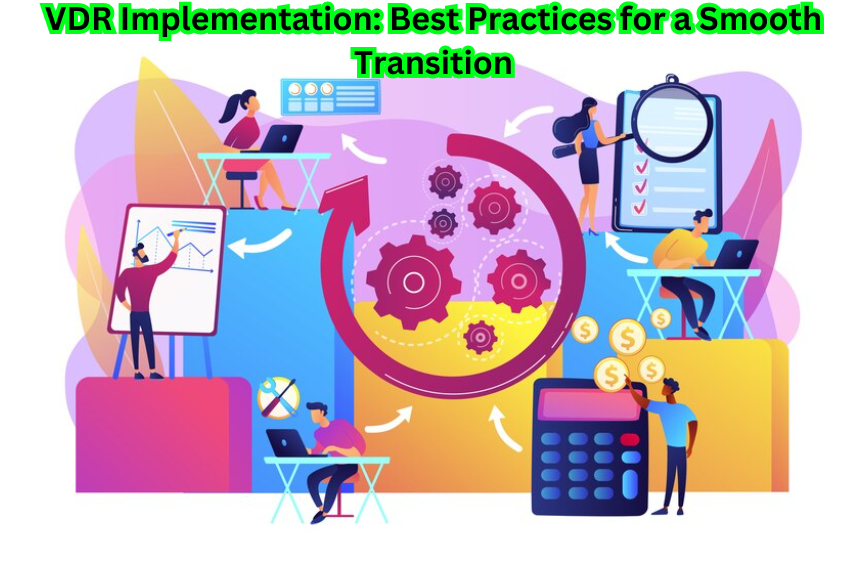In today’s fast-paced digital wasdisaster, recovery is important to ensure that business is safe. Businesses need a strong Virtual Data Room (VDR) application more than ever because they depend on technology more and more. This piece will discuss the best ways to make the change during DR implementation go smoothly. It will also cover important strategies to improve data protection, reduce downtime, and make the business more resilient overall.
Figuring out what DR implementation is all about
What does “DR Implementation” mean, and why is it so important? (H2)
Setting up Disaster Recovery (DR) procedures and systems assures quick restoration of data and IT infrastructure in case of an emergency or disaster. Businesses are at risk of many things that can damage data, from natural disasters to hacking. So, a well-executed DR plan is not just a safety measure; it’s necessary for any business using digital assets.
Looking at what your business needs
Carrying Out a Full Risk Assessment
Before starting the process of DR adoption, it’s important to do a full risk assessment. Discuss possible risks, weak spots, and how downtime could affect your business. This step sets the stage for making a DR plan that fits your goals and level of comfort with risk.

Getting DR to work with business goals
For it to work, it would help if you had a strong connection between your DR plan and your business goals. By lining them up, you can be sure that the DR plan lowers risks and helps your organization reach its goals and be more resilient.
How to Pick the Best Virtual Data Room
What VDR Does in DR Implementation
As a safe place to store important data, the Virtual Data Room (VDR) is a key part of the DR application. When looking for a VDR, ensure it has security features like encryption, access controls, and backups to protect your data from possible dangers.
adding VDR to infrastructure that is already in place
An important part of a smooth shift is seamless merging. If you choose a VDR, ensure it can work with your current IT system without problems. This will keep the application process as smooth as possible.
Setting up clear rules for communication
Communication is a Key Part
Communication that works well is the key to a good DR application. Setting up clear communication rules will help ensure everyone knows about the DR plan and what to do in a disaster.
Having regular drills and training
Just writing down a DR plan is not enough. Regular training and practice are important to make sure that everyone on your team knows what to do in a disaster and that they can do it more quickly.
Testing and Making Changes
Why regular testing is important
Testing your DR plan regularly is important to make sure it works. Run fake disaster scenarios to find possible weak spots and places to improve things. This proactive method ensures that your team is ready for situations in the real world.
Refinement by Iteration
Putting DR in place is not a one-time thing. Adopt an iterative approach and make changes to your DR plan based on the results of your tests, new threats, and changing business needs. Making improvements all the time is the key to keeping your company strong.
Keeping data safe in the cloud
Using technology in the cloud
DR deployment has greatly changed because cloud technology now offers safe and scalable storage options. Look into cloud-based VDR choices that give you reliable access to your information if something bad happens.
Encryption and backup of data
To protect your data from online dangers, make data encryption and backup a top priority in your VDR. Using multiple layers of security offers an extra layer of safety, keeping your important data safe.
In conclusion
Finally, implementing Disaster Recovery (DR) in place, especially through a Virtual Data Room (VDR), is an important part of any current business plan. You can protect your business from disasters by ensuring your DR plan fits your business goals, picking the right VDR, setting clear communication rules, and using a testing and iterative approach. Remember that the key to a smooth shift is planning, improving, and using cutting-edge technologies that make data safer and businesses more resilient.
Frequently Asked Questions on VDR Implementation: Untangling the Keys to a Smooth Transition
In the ever-changing world of data management, setting up a Virtual Data Room (VDR) is a key strategy for businesses that want to keep their operations running smoothly. It’s important to know a lot about best practices to get through this process, from assessing risks to following communication rules. In this piece, we break down the most common questions about VDR Implementation and provide helpful responses to help businesses make a smooth shift. Read our extensive Frequently Asked Questions (FAQs) to learn more about the important steps you need to take to make your Disaster Recovery plan work better.
What is VDR Implementation, and why is it so important?
VDR Implementation adds a Virtual Data Room to a company’s system to make data safer and Disaster Recovery (DR) plans more efficient. Keeping important data safe and ensuring that business keeps running even when bad things happen is very important.
What role does VDR play in disaster recovery?
Virtual data rooms are vital to disaster recovery because they keep important data safe. In a disaster, VDRs allow quick and secure access to important data, cutting downtime and speeding up recovery.

What elements are necessary for a good VDR Implementation?
Encryption, access rules, a smooth transition into the current infrastructure, and regular testing are all important components of a successful VDR Implementation. All of these parts work together to make a strong Disaster Recovery plan.
How should businesses match their VDR Implementation goals with their business goals?
By figuring out their specific needs and risk tolerance, organizations can better match VDR Implementation with business goals. This ensures that the DR plan lowers risks and helps the company reach its goals and be more resilient.
In VDR Implementation, what part does contact play?
In VDR Implementation, clear communication is very important. By setting rules and holding regular training classes, you can ensure that everyone who needs to know about the DR plan does so. This will help everyone work together in case of a disaster.

